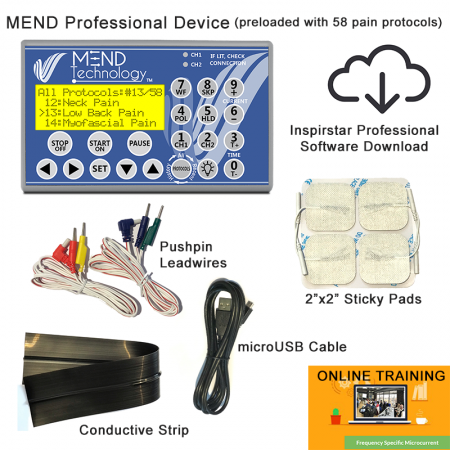Imagine reducing muscle pain by 83%—without medication or downtime. Frequency Specific Microcurrent (FSM) therapy is making that possible, and practitioners across the country are turning to this approach to improve recovery, reduce inflammation, and get patients back on their feet faster.

If you've ever pushed too hard during a workout or dealt with chronic inflammation, you know the drill: the soreness lingers, mobility suffers, and healing takes time. Traditional methods help, but they often fall short of addressing cellular-level trauma.
That's where Frequency Specific Microcurrent (FSM) therapy comes in. Unlike surface-level treatments, FSM uses targeted microcurrents to support healing deep within the tissue—helping reduce pain and accelerate recovery times.
FSM therapy isn't a trend. In clinical studies focused on delayed onset muscle soreness, participants who received FSM reported 75% less pain after 24 hours and an 83% reduction after 48 hours, compared to those who didn't receive the treatment.
The findings weren't marginal—results carried strong statistical significance (p = 0.0005), indicating real-world, replicable effects.
For practitioners integrating FSM into their workflow, not all devices are created equal. A professional-grade unit should allow real-time adjustments to frequency, polarity, intensity, and waveform—and support protocol sequencing to fit specific treatment plans.
Traditionally, delivering FSM therapy required juggling multiple machines—each serving a different function. But some devices now combine manual, automated, and programmable modes into one portable unit, reducing both cost and setup time.
An example is the MEND Professional™ device, which can store up to 999 protocols and lets practitioners link up to nine in sequence. A streamlined interface, backlit display, and intuitive keypad help support fast, accurate delivery in clinical settings.
For clinics new to FSM therapy, entry-level options like the MEND Wellness™ unit offer a more accessible way to get started. Preloaded with Physical Medicine protocols and room for 99 custom entries, these units help practitioners deliver results while still learning the technology.
Bio-resonance and energy-based therapies are quickly gaining traction in integrative and sports medicine. In the past two years alone, clinicians have reported success using FSM to decrease inflammation, support musculoskeletal healing, and even address trauma-related discomfort.
Brands like MEND Technology, which consult closely with clinicians during product development, have contributed to this growth by refining devices that match real-world treatment demands.
Whether you're a seasoned practitioner or exploring FSM for the first time, microcurrent therapy is no longer niche—it's becoming a modern essential in progressive wellness practices.
The future of pain management may be smaller, smarter—and already within reach. Check out MEND Technology's device page for more details about their devices.
